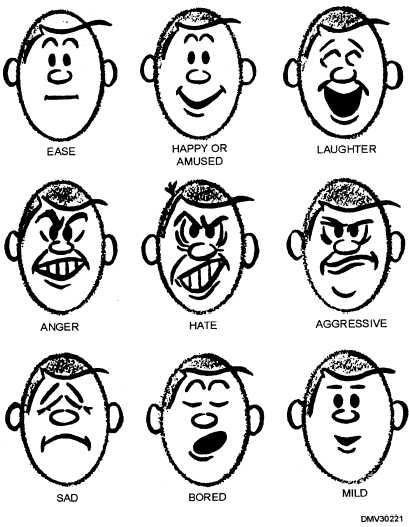Another component of body language as a form on non-verbal communication that impacts the working environment is that of kinesics relating to the face. Again if we consider the situational context of an employee interview (organisational recruitment) or even a performance management meeting between a manager and employee, one of the most common deception-related gestures are hand-to-face movements.
For example, Waltman & Golen (1993) maintain that during deception the hand is often used to cover the mouth and “the person talks through the fingers as if hiding or trying to keep words from escaping”. Similarly, scratching the neck is likely to suggest that one is uncertain, concerned or doubtful; rubbing the ear can indicate that the person feels they have heard enough and chin stroking can be a prelude to one making a decision (Fletcher. 2000). Hence, the importance of being aware of our own body language, and learning to read others non-verbal communication in many situations in the modern working environment is highlighted in these examples.
One of the most obvious forms of body language is that of facial expressions and is somewhat more universal than some of the other forms of body language. It is through the use of over 20 facial muscles that we encode in excess of 1000 distinct expressions that indicate our emotion and communicate a non-verbal message (Hargie, Dickson & Tourish. 2004, p. 49). Facial expressions are also said to be the most accurate predictors of attitudes and feelings (Graham et al (1991).

Facial expressions are arranged into six universally recognized basic categories including fear, happiness, sadness, disgust, anger and surprise (Ekman & Friesen, 1975; Izard, 1971). In comparison with differing meanings for eye contact as mentioned earlier, facial expressions can generally be identified in a similar manner across different backgrounds and also cultures (Ekman & Friesen, 1975; Izard, 1971; Izard, 1994).
Despite this, there are still some cultural implications to be considered. For example, Japanese articulate that negative emotions should not be shown, thus the smile is used as a ‘mask’ for negative emotion including embarrassment or reserve (Ramsey, 1994). This may be relevant to know in the instance of delivering performance feedback to an employee for example. Hence although the facial expressions can be predominantly read across cultures; the way in which they are used to non-verbally communicate in the working environment varies.
Interesting stuff when you consider how we analyse non-verbal communication in scenarios such as job interviews, performance management meetings and negotiations. It also shows what a powerful too it can be, and that you need to be aware of your own non-verbal cues.

